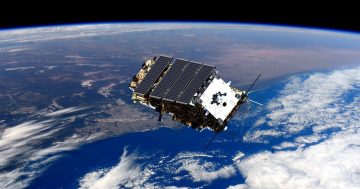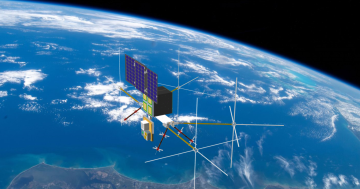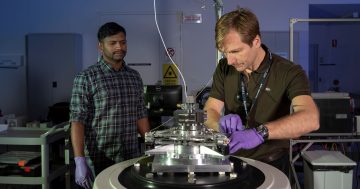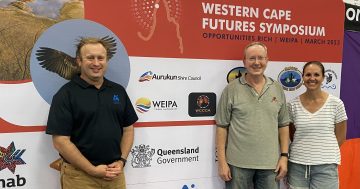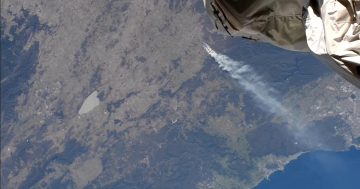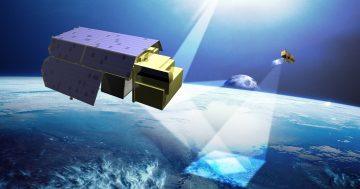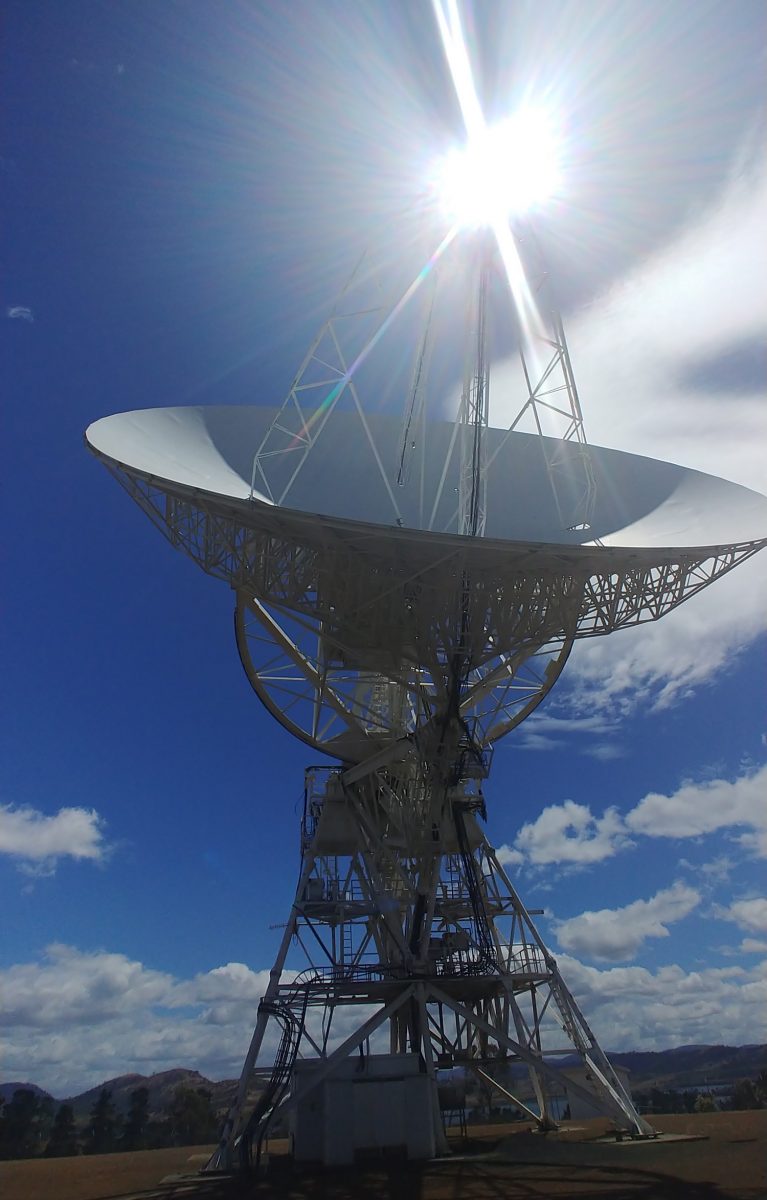
One of UTas’ radio telescopes that forms part of the Southern Guardian network. Photo: Hensoldt Australia.
‘Space: The Final Frontier’ will forever stick in the minds of Star Trek fans and the wider sci-fi community.
But space – at least that region of space close to Earth known as low earth orbit (or LEO) – is rapidly becoming overpopulated with new satellites. It’s also an over-polluted dumping ground that is putting at risk humankind’s ability to use it safely.
There are an estimated 5000 active satellites in orbit – up from just 2000 in 2018 – and probably more than 1000 inactive or ‘dead’ satellites.
The rapid proliferation of ‘space junk’ has been caused by nations and commercial operators finding increasingly cheaper methods of launching satellites into space and creating viable small satellites, often just the size of a loaf of bread.
While some operators, such as Elon Musk’s SpaceX, have developed methods to return rocket boosters and capsules to Earth for reuse, most of the thousands of large pieces of junk are comprised of old rocket bodies and dead satellites.
The other, and much more serious issue facing the space industry, is the junk created by anti-satellite tests – mainly by China and Russia – in recent years. These are tests where old weather or communications satellites in orbit have been destroyed by weapons fired from Earth as a test or demonstration of current or future weapons systems.
But rather than actually shooting down the satellites, these tests have only succeeded in destroying them, thus creating thousands of smaller pieces of space junk gradually spreading out in orbit as they circle Earth.
On face value, something as small as a nut or bolt wouldn’t seem to represent much of a threat to a crewed spacecraft. But if one hits you while travelling at 27,000 or more kilometres per hour, it can go right through many layers of metal.
While some innovative concepts to clean up space junk have been displayed, these are prohibitively expensive and will likely not be technically feasible for decades. The only other solution, for now, is to develop better ways of mapping and tracking the space junk that resides in orbit, and developing a system that alerts spacecraft of potential collisions so they can adjust their orbits.
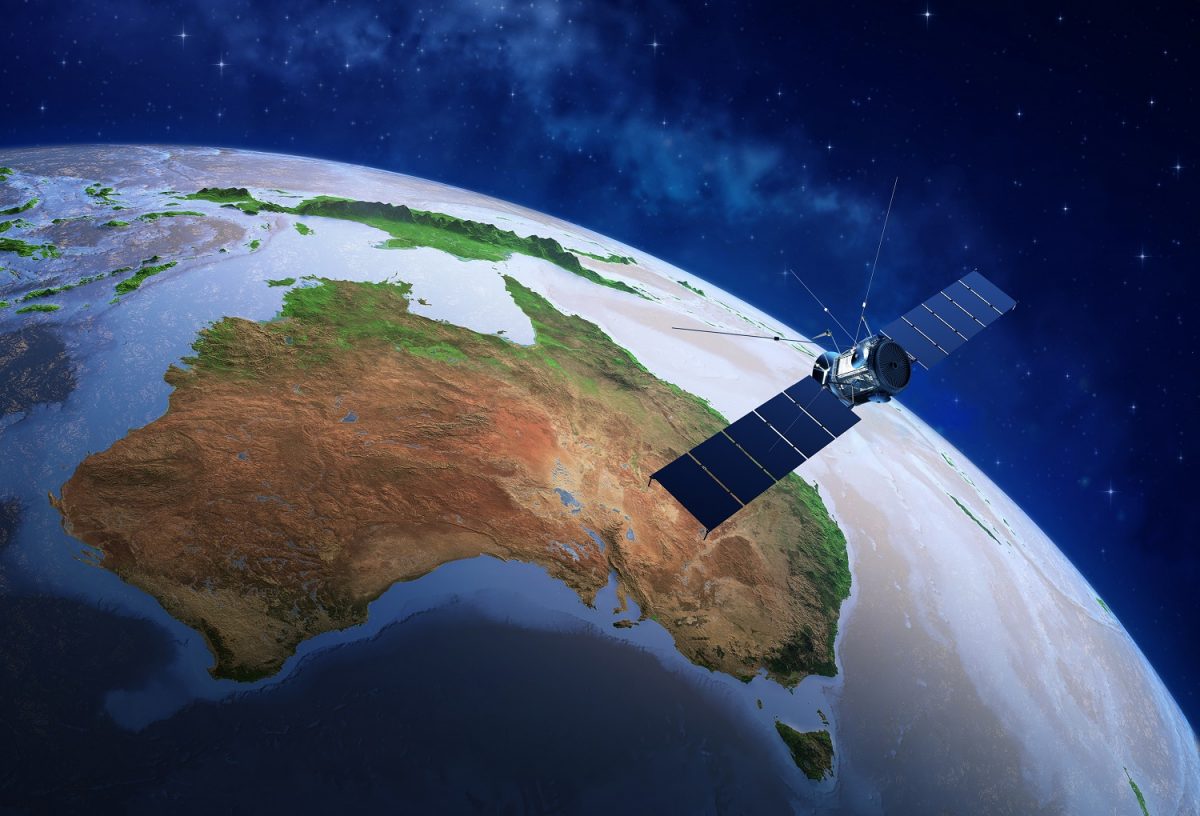
Australia and Tasmania, in particular, are ideally suited for tracking and cataloguing space junk and satellites in polar orbits. Image: Hensoldt Australia.
Australia is at the forefront of this field, known as Space Domain Awareness (SDA). Due to our unique geography, researchers from the University of Tasmania (UTas) have teamed with the Tasmanian Government and the Australian subsidiary of German sensor specialist Hensoldt to establish Southern Guardian.
Southern Guardian is a national asset that uses a network of astronomical radio, radar and optical telescopes owned by UTas which are located in Tasmania, Western Australia, South Australia and the Northern Territory to track objects in LEO and, in particular, those objects in polar orbits that come up over the South Pole.
The data from the different sensors is fused into an operational picture of LEO through Hensoldt Australia’s Space Battle Management Suite (SBMS), from where their orbits can be catalogued and mapped.
Civilian and military customers use the data recorded by Southern Guardian to monitor the spread of space junk and the activities of active satellites. Most satellites carry tanks of fuel which allows them to be repositioned in orbit, so it is important to be able to monitor these movements and re-predict their orbits to avoid ‘conjunctions’ or collisions.
Having sensors spread across Australia means they can essentially be used as one huge sensor. Plus, with new technologies coming online, far greater fidelity of what is happening in LEO will soon be possible.
These new technologies include active electronically scanned arrays, passive radars, and artificial intelligence (AI) systems – capabilities in which many Australian companies lead the world. These technologies will allow not only greater wide-area surveillance capabilities but will also allow much finer tracking and data analytics capabilities.












